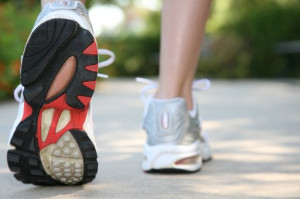
In the realm of footwear, the disparities between walking and running shoes are significant. While both serve the purpose of foot protection and support, their designs cater to distinct biomechanical demands. Walking shoes are crafted to focus on stability and cushioning, providing adequate support for the heel strike and transition to toe-off during a walking gait. Conversely, running shoes prioritize flexibility and shock absorption to accommodate the higher impact forces generated by running strides. These shoes typically feature additional cushioning in the forefoot region and a more pronounced heel-to-toe drop to facilitate a smooth transition. The variations extend to the outsole patterns as well, with running shoes often incorporating deeper treads for enhanced traction on various surfaces. Understanding these differences is vital for selecting the appropriate footwear to optimize comfort and performance during walking or running activities. If you like to walk or run and have questions about what type of shoes to purchase, it is suggested that you contact a chiropodist.
Finding the right shoes can sometimes be a major hassle, especially if you intend to work out in them. There are shoes on the market designed specifically for running and walking, but it can be difficult to differentiate between the two and find the right shoes for you. If you’re having trouble finding the right shoes, please consult with Emily Yu, B.Sc from Uptown Foot Care Clinic. Our specialist can help you maintain the health of your lower limbs and your mobility.
What are the differences between running and walking shoes?
These two types of shoes vary along several parameters.
Cushioning: Runners need more cushioning in the heel and forefoot areas of the shoe, while walkers can get away with less cushioning.
Heel height: Runners need a higher heel to provide them with stability, but the ideal height of the heel for runners varies depending on their running gait. Walkers generally don’t need a built-up heel.
Heel flare: Flared heels can help provide extra stability for runners with certain gaits, while walkers may benefit from a flared heel to control the motion of their foot.
Flexibility: Both runners and walkers need shoes that are flexible.
For more information about the differences between walking and running shoes, and to figure out which shoes may be right for you, please consult with a chiropodist. Feel free to contact our office located in . We offer the newest diagnostic and treatment technologies for all your foot care needs.
